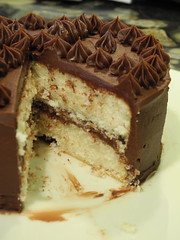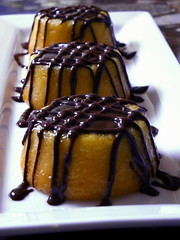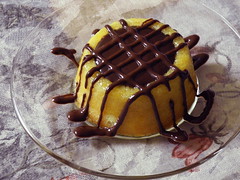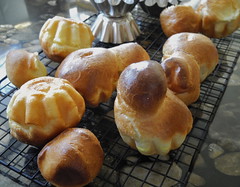 The BBA Challenge 2011 assignment for the week was brioche. I've made brioche before, I think as a food-processor recipe, but it's been years. Reinhart offers three versions, with different levels of richness (primarily butter content). I went with middle-class brioche, the one with a cup of butter, as opposed to 2 cups (rich man's) or 1/2 cup (poor man's). No matter which level you pick, brioche is pretty indulgent stuff.
The BBA Challenge 2011 assignment for the week was brioche. I've made brioche before, I think as a food-processor recipe, but it's been years. Reinhart offers three versions, with different levels of richness (primarily butter content). I went with middle-class brioche, the one with a cup of butter, as opposed to 2 cups (rich man's) or 1/2 cup (poor man's). No matter which level you pick, brioche is pretty indulgent stuff. Clearly I need to work on my shaping methods for brioches à tête. Mine came out "brioches décapité", mostly (pardon my French). Part of that was maybe putting too much dough in the little tins, and maybe making the 'tête' too large. The larger part was certainly not getting the 2 pieces stuck together well enough. I used the technique I learned way back when: make the smaller piece into a teardrop shape, make a hole in the larger piece, and stick the pointy part of the teardrop in the hole. Well...that didn't work so well, and most of my heads ended up beside the bodies. Next time I'll try the one piece wrap-around and through method in the book.
Clearly I need to work on my shaping methods for brioches à tête. Mine came out "brioches décapité", mostly (pardon my French). Part of that was maybe putting too much dough in the little tins, and maybe making the 'tête' too large. The larger part was certainly not getting the 2 pieces stuck together well enough. I used the technique I learned way back when: make the smaller piece into a teardrop shape, make a hole in the larger piece, and stick the pointy part of the teardrop in the hole. Well...that didn't work so well, and most of my heads ended up beside the bodies. Next time I'll try the one piece wrap-around and through method in the book.I tried a few other experiments: I made 4 small cinnamon rolls with one piece of dough, using KA's cinnamon filling for convenience as I didn't have cinnamon-sugar mixed up and didn't want to add (more) butter in the filling anyway.



I stuck a chunk of dark chocolate in 2 for Brioche au Chocolat--that was lovely, though I should have skipped the 'a tete' on those for better centering of the chocolate. And when I was all out of mini brioche tins and couldn't find my big one, I made the rest of the dough into a plain loaf which will become toast and/or bostock, the variety that's staled brioche with an almond-cream topping. Meanwhile, that loaf will go in the freezer. I let the loaf over-rise, I think, as I lost track of its timing--certainly the texture isn't as nicely fine-grained as the brioche a tete.





Baking notes: no problems with the dough. It appeared to be too wet at one point with part of the mixture in a layer over the sides of the mixer bowl and the rest on the paddle, but when I did a scrape-down and started up the mixer again, the dough came together and was more like a usual bread dough ball. It still needed another scrape-down or two, but it crossed the line from 'batter' to 'bread' at that point. I never needed to switch to the dough hook.
I wrapped the dough in plastic wrap (instead of using a plastic bag) and tucked it in the fridge overnight for the requisite chilling, but failed to remember that it would rise some--almost tilted a fridge shelf with the rise.
I overbaked all of 'em to too high a temperature. I forgot to set a timer on one batch, but have no excuse for the rest except not checking early enough. But you know, brioche is so rich this was not a big problem. I get to try again next week, as the Casatiello is a variation on brioche.
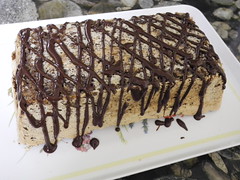





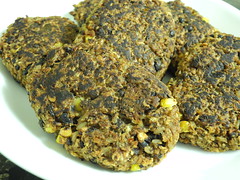
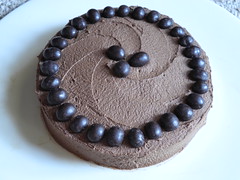







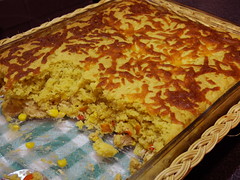




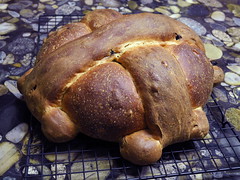

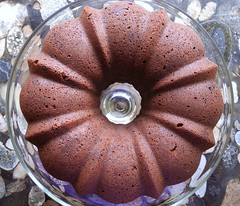








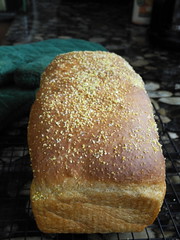

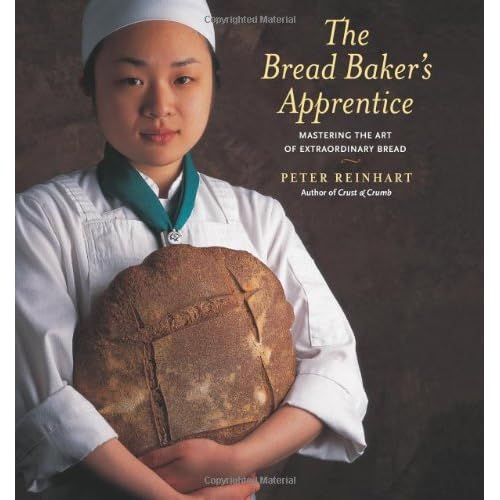 As we're on the downhill slope of the Heavenly Cakes Bake-along, I've been thinking about another online baking project.
As we're on the downhill slope of the Heavenly Cakes Bake-along, I've been thinking about another online baking project. 